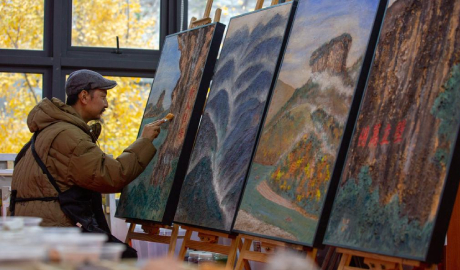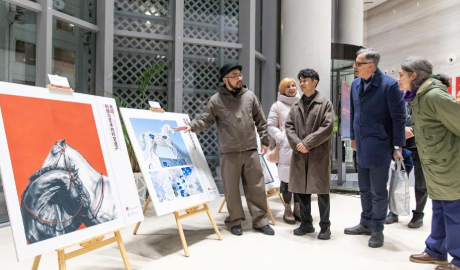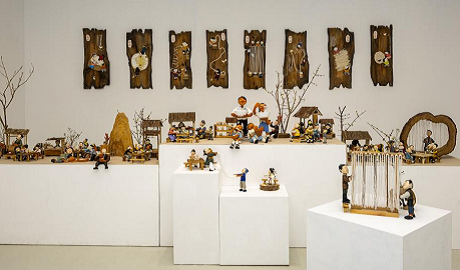

Decorated by red walls, high pines, white pagodas and devout monks chanting Buddhist scripts, and located outside the Deshengmen in Beijing, a royal Tibetan Buddhist temple is now known to all after more than 300 years – that’s the Xihuang Temple.
The Temple was built specifically for the 5th Dalai Lama’s visit to Beijing. After the Qing army marched into the hinterland in 1644, it immediately became imperative to build political connections with Xizang as the Central Government of Qing wasn’t consolidated at the time. It was under such background that the 5th Dalai Lama arrived in Beijing in 1653 to have an audience with the Emperor Shunzhi.
In his autobiography, Dalai Lama recorded the meeting with His Majesty: “after Shunzhi came down from his throne, he grabbed my hands and talked gently with me, I was arranged with a lower seat right next to his throne”. Dalai Lama was deeply impressed by the young emperor of Qing.
Shunzhi bestowed upon the 5th Dalai Lama the title of “Buddha of Great Compassion in the West, Leader of the Buddhist Faith Beneath the Sky, Holder of the Vajra, the Dalai Lama”, which became the source of the Dalai Lama’s political and religious power. After he returned to Xizang, any decree issued by him was stamped by the gold seal, carrying the title granted by the emperor.
This reflects the sovereignty of the central government over Xizang. After the 5th Dalai Lama, the Temple became the residence of Dalai Lama and Panchen of various generations in Beijing. Their envoys to the central government also lived here. It has become a link between the central government of the Qing Dynasty and Xizang.
Later, the Xihuang Temple went through ups and downs; it was destroyed during the invasion of the British and French armies in 1860, with its building seriously damaged. The Qingjing Huacheng Pagoda and its courtyard become the only historical relics of the Temple that remained intact.
After the founding of the People’s Republic of China, both the central government and the Beijing municipal government attached great importance to the Temple. In 1986, the 10th Panchen selected the Temple as the site of High-level Tibetan Buddhism College of China, with large-scale renovations carried out. In 1987, the College was established, which restored its original splendor in history.
It is important in the history of Tibetan Buddhism in Beijing, reflecting the sovereignty of the central government over Xizang; it also reflects the patriotism of generations of Tibetan Buddhist monks, Dalai Lama and Panchen. It represents not only a bond between the central government and Xizang, but also a symbol of ethnic unity amongst the Tibetan Buddhist community in Beijing. It’s fair to say that the Temple also epitomizes the support of Tibetan Buddhists for the motherland, and their loyalty to the religion.

Wuyi rock pigment painting in China's Fujian infuses modern artistic elements into tradition

China-Serbia digital art exhibition explores time, space, heritage


Exhibition of children's arts opens in southwest China's Chongqing

World's largest ice and snow theme park opens, igniting China's winter tourism fever
点击右上角![]() 微信好友
微信好友
 朋友圈
朋友圈

请使用浏览器分享功能进行分享
